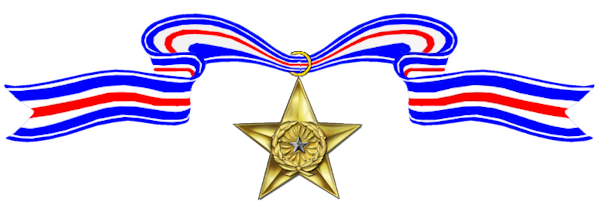The President of the United States of America, authorized by Act of Congress, July 8, 1918 (amended by act of July 25, 1963), takes pleasure in presenting the Silver Star to Lieutenant Colonel (Infantry), [then Major] Wallace S. Tyson, United States Army, for gallantry in connection with military operations against an opposing armed force in the Republic of Vietnam, on 28 and 29 May 1966. On the morning of 28 May 1966, Company B, 2d Battalion, 35th Infantry Regiment, 25th Infantry Division, was lifted by helicopter into a landing zone 35 miles southwest of Pleiku, Vietnam, from which it was to conduct an operation. On landing, enemy contact was immediate, and during the next several hours enemy pressure against the Company B perimeter continued to increase. It was clear not only that the remainder of Company B would have to be inserted into the landing zone, but also that additional reinforcements would be required. A decision was made to reinforce with company A, 1st Battalion, 35th Infantry Regiment, but enemy action prevented insertion of any of these reinforcing elements until well in the afternoon. Colonel Tyson was directed to move into the landing zone and assume command of the two company task forces. He arrived with the lead elements of Company A, and, despite deadly sniper fire and frequent firefights of violent intensity, immediately set about to secure the landing zone and prepare a defense capable of holding out against the large enemy force that by this time had completely ringed the landing zone. With complete disregard for his own personal safety, Colonel Tyson quickly reconnoitered the landing zone, formed his defensive plan, and then executed that plan with vigor and dispatch. Fully exposed to hostile fire, he moved around the perimeter making necessary adjustments to solidify and strengthen the defense. On one occasion, a sniper bullet shattered his wrist watch and knocked it completely off his wrist. But even this near miss failed to deter Colonel Tyson from preparing his defense or to alter in any way his magnificent example of courage and resolution. By his own actions, he imparted a sense of urgency, purpose, and determination to the men on the line that subsequently played a key role in the success with which his force defended against overwhelming numerical superiority. During the period evacuation of the wounded became a critical matter. Faced with the choice of keeping seriously wounded personnel on the ground or attempting to effect evacuation by helicopter, Colonel Tyson chose the latter and, by appropriate tactical action on the ground, was able to bring in medical evacuation aircraft without loss. At 0230 hours on the 29th, the North Vietnamese Army force launched a heavy and continuing attack on the landing zone perimeter. An enemy regiment, reinforced, was involved. Demonstrating outstanding leadership, resolute courage, and remarkable tactical skill, Colonel Tyson conducted a singularly successful defense against enemy attacks that continued throughout the night. His positions were never penetrated. When light conditions permitted, he personally “talked” armed helicopter crews into strafing and rocket runs that brought their fires to within 25 meters of the perimeter. On the morning of 29 May, a misdirected aircraft inadvertently dropped two napalm tanks on the task force Command Post. In spite of his own burns, Colonel Tyson raced to the radio, located beyond a covered position, contacted the forward air controller, and thus was able to divert a second aircraft already on approach. He then directed it through two dry runs, assured himself that the aircraft were back on target, and then brought it in again against the enemy. All enemy attacks were repulsed. Throughout the entire ordeal, the morale of the task force remained consistently high. Colonel Tyson’s personal gallantry, outstanding leadership, and exemplary courage, in the face of overwhelmingly superior enemy forces, are in keeping with the highest traditions of the military service and reflect great credit upon himself, his unit, and the United States Army.


